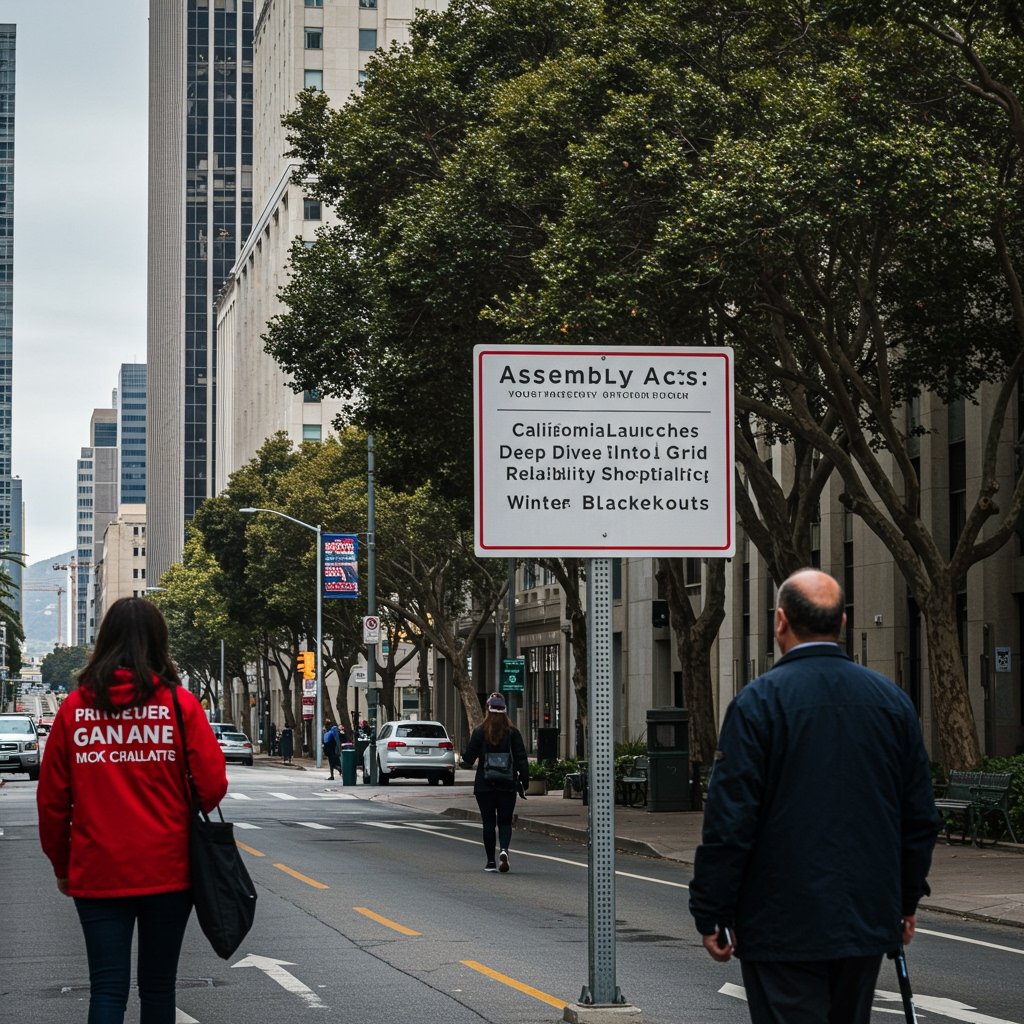California Assembly Launches Sweeping Probe into State Power Grid Stability
Sacramento, CA – In a decisive move following widespread winter power outages, the California Assembly Committee on Utilities and Energy voted unanimously on February 4, 2025, to initiate a formal and comprehensive investigation into the resilience and stability of the state’s electrical grid. The inquiry comes in direct response to significant and disruptive outages that impacted millions of California residents during severe weather events in December 2024 and January 2025, highlighting critical vulnerabilities in the energy infrastructure.
The recent blackouts, which left homes and businesses without power for extended periods across numerous counties, underscored the grid’s fragility when confronted with extreme conditions. Families faced freezing temperatures without heat, businesses lost revenue, and daily life for a vast swathe of the population was severely disrupted. These events amplified existing concerns about the grid’s ability to withstand the increasing frequency and intensity of climate-related challenges, from heatwaves driving peak demand to winter storms stressing physical infrastructure. The magnitude and duration of the December and January outages served as a clear impetus for legislative action, prompting lawmakers to seek a deeper understanding of the systemic issues contributing to grid failures.
The formal investigation launched by the Assembly Committee on Utilities and Energy is designed to be thorough, scrutinizing key players and practices within California’s complex energy ecosystem. A central focus of the inquiry will be the long-term investment strategies of the state’s major investor-owned utilities, specifically Pacific Gas and Electric Company (PG&E) and Southern California Edison (SCE). Committee members intend to examine whether utility spending on infrastructure maintenance, upgrades, and hardening has been adequate to meet current and future reliability demands, particularly in light of aging infrastructure and evolving climate threats. Decisions regarding capital allocation, deferred maintenance, and proactive resilience measures will be under the microscope.
Equally critical to the investigation’s scope is an assessment of the oversight effectiveness of the California Public Utilities Commission (CPUC). The CPUC is the state agency responsible for regulating privately owned public utilities, including electric companies. The Assembly committee will evaluate the CPUC’s role in setting safety and reliability standards, approving utility rate cases and investment plans, and enforcing compliance. Lawmakers will seek to determine if regulatory frameworks have been sufficiently stringent or adaptable to ensure utilities are making necessary investments in grid reliability and safety. The efficacy of the CPUC’s monitoring and enforcement mechanisms will be a key area of focus.
Furthermore, the investigation will delve into the operational management by the California Independent System Operator (CAISO). CAISO is responsible for managing the flow of electricity across the high-voltage transmission grid and ensuring grid reliability in real time. This involves balancing supply and demand, managing congestion, and coordinating responses during emergencies. The committee will examine CAISO’s protocols and performance during the December 2024 and January 2025 events, assessing the effectiveness of their operational decisions, communication procedures, and preparedness for extreme weather scenarios. The interface and coordination between CAISO, utilities, and regulators during crises will also be evaluated.
The Assembly committee has set an ambitious timeline for its work. The overarching goal is to propose concrete legislative reforms aimed at bolstering grid resilience and preventing future widespread outages. These proposals are expected to be ready by summer 2025. Potential legislative actions under consideration include introducing new mandates for enhanced grid hardening – measures such as undergrounding power lines in high-risk areas, upgrading poles and wires, and implementing advanced monitoring technologies. Another significant area for potential reform is accelerating and expanding mandates for energy storage integration, including battery storage systems at utility-scale and distributed levels, which can provide crucial backup power and grid stability during periods of high demand or supply disruption.
To inform their legislative proposals, the committee plans to gather testimony from a wide range of stakeholders and experts. Public hearings are scheduled to commence in early March 2025. These hearings are anticipated to feature testimony from senior executives from PG&E and SCE, as well as high-ranking officials from the CPUC and CAISO. The committee also plans to hear from energy experts, consumer advocates, and potentially impacted residents to gain a comprehensive perspective on the challenges facing the grid and potential solutions. The public hearing process is intended to be transparent and provide an opportunity for public input.
California’s energy landscape is undergoing a rapid transformation, driven by ambitious climate goals, increasing electrification of transportation and buildings, and the integration of more renewable energy sources like solar and wind. While these changes are essential for a sustainable future, they also introduce new complexities and challenges for grid management and reliability. The investigation launched by the Assembly represents a critical legislative effort to confront these challenges head-on, moving beyond reactive responses to proactive reforms aimed at building a grid that is robust, reliable, and capable of serving the needs of Californians in an era of climate change. The outcome of this inquiry and the legislative reforms proposed by summer 2025 will have significant implications for the future of California’s energy infrastructure and the daily lives of its residents.


















